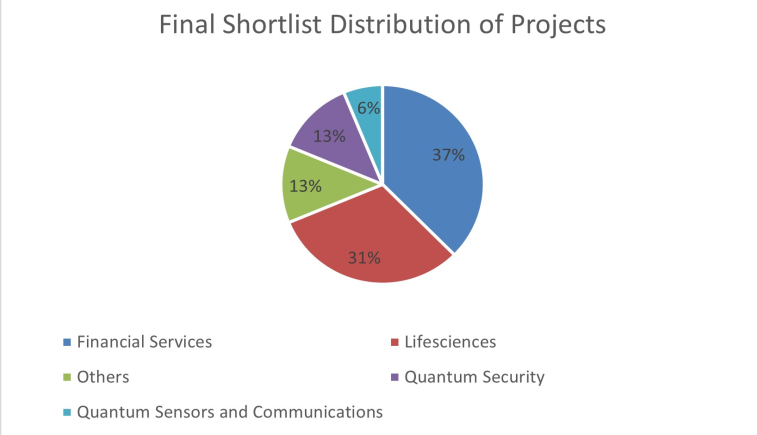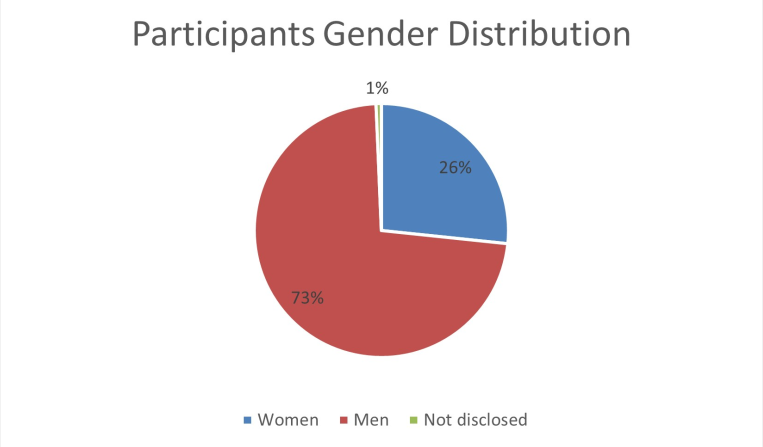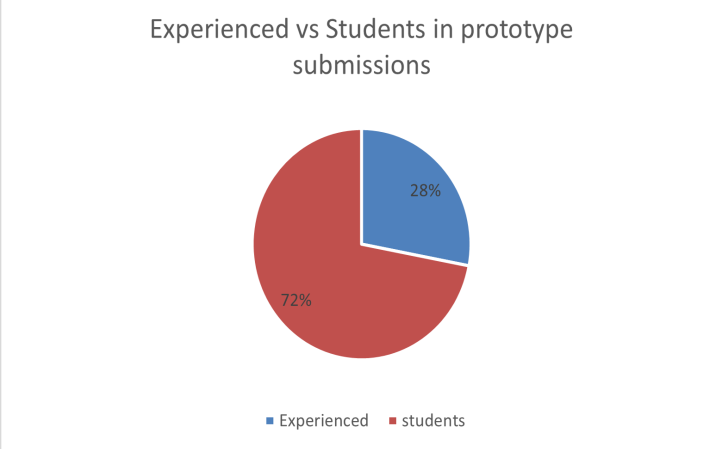1. Design of the Hackathon
The Quantum Science and Technology Hackathon (QSTH 2022) was designed as an attempt
to stir the Quantum Ecosystem and enable people to think and implement new ideas /projects
in Quantum. The aim was to create startups from scratch and provide platforms andmechanisms for projects to move forward.
The Hackathon commenced on the 15th of August 2022 and the final presentation and in 3 phases
– An Ideation phase, followed by
– Prototype Development phase
– Final Shortlist phase.
Through the Hackathon, we enabled students and professionals alike to access mentorship and platform support from industry leaders. In turn, the industry got an opportunity to connect with and experience the talent in Quantum, build relationships with future hires, and issue specific challenges and use cases in Quantum that can be addressed using their development environments. This, combined with the globally distributed participation of people, mentors, and volunteers, designated QSTH 2022 as the first of its kind, cross-border, interdisciplinary and cross-platform Quantum Hackathon.
QSTH 2022 marks the beginning of a startup revolution in Quantum in India, and with the initial momentum already stirring the Quantum Ecosystem, the journey is far from over.
1.1 Results of the Hackathon
A total of 132 project ideas were submitted in the Ideation Phase. From this, a select pool of 61 projects were shortlisted and were given the time and resources to build a prototype. A total of 37 prototypes were submitted after the Prototype Development Phase (which was also the most mentorship-intensive phase). Following this, a total of 16 projects were shortlisted after intense scrutiny that carefully evaluated prototypes on Code (Quality, Technology, Architecture), Design and Overall usability and implementation. These 16 projects were presented in front of a final jury and top 5 projects were declared as winners, with the following awards distributed:
FIRST PRIZE
Awarded to: Team SybilSys
Project: Qule – Exploring Chemical Infinities
Category: LifeSciences
SECOND PRIZE
Awarded to: Team DeQuani from Defence Research and Development Laboratory (DRDL) –DRDO
Project: Design and Implementation of a Quantum safe cryptography algorithm using Polynomials to mitigate key-size based attacks
Category: Quantum Security
THIRD PRIZE
Awarded to: Team AXIS
Project: Compute the mean electric axis of the heart on IBM quantum hardware. Make the heart axis prediction using the DWave Quantum Annealers.
Category: Lifesciences
SPECIAL MENTION1
Awarded to: Team Quantum Makers from Tech Mahindra
Project: Using QGANs with adaptive training data for small molecule drug discovery
Category: Lifesciences
SPECIAL MENTION2
Awarded to: Team Q3DPredictor, from Qkrishi
Project: Efficient Prediction of 3D Structure of Proteins using Quantum Algorithms
Category: Lifesciences
2. Interesting QSTH 2022 Statistics
2.1 Global Participation

There were 1626 participants who registered for the Hackathon. This is a large community. Figure above shows the distribution of people who registered from outside India. The enthusiastic participation from different countries is of interest since not much of International Outreach was done for the Hackathon. It is imperative to note that the Team Axis, which won the Third Prize, consisted of two participants, one from USA and the other from Russia. As a value, we are focussed on International Collaboration in Science Technology and hence these statistics demonstrated that it is possible to create a stronger collaboration base in Quantum from India.
There were 3 International teams in the final 16 shortlist.
2. 2 Theme-wise Analysis

The various categories under which people could submit projects were Financial Service, Lifesciences, Quantum Security, Quantum Sensors and Communications and Others. As you can see in the figure, there was a fair distribution of the various categories in the final shortlist. This gives us some initial insight about the almost parallel growth in popularity of quantum in the different categories, with use cases of quantum in financial services sector and the Lifesciences sector being the most popular ones.
The final winners had more projects from Lifesciences
2.3 Platform Analysis

Figure shows the distribution of various platforms used in building the prototypes submitted in QSTH 2022. This statistic gives an insight into the quantum environments (Software and Hardware systems) that are readily available for people to work with. It was also observed that some of the submitted projects did not utilize or are yet to decide This data thus illustrates the need for active awareness of many more quantum platforms
2.4 Gender-wise Distribution

The gender distribution of the participants is heavily skewed towards men, with only 26% women. An interesting observation to note here is that despite the less percentage of women participants, two out of the five winning teams were led by women. This speaks about the importance of developing programs and initiatives that can bridge the gender gap in quantum development at an early stage to maximize the acceleration of the quantum ecosystem. Along these lines, QETCI has planned multiple, soon to be launched initiatives that aim to improve participation supporting similar programs from other entities in the ecosystem.
2.5 Distribution of Experienced Professionals vs Students in the Prototype Phase

This shows a fair amount of participation from experienced professionals. Despite Quantum initiatives, awareness and exposure being relatively nascent among the colleges/institutions and universities, students dominated the participation distribution over professionals. The statistic demonstrates that this is the right time to introduce full-fledged quantum education, training, and awareness programs right from schools to universities, thereby tapping into the potential of growing interest towards quantum. QETCI is working towards a Plan for Skill Development and will be looking for partners to help support the plan
2.6 Mentorship and Jury
Although QSTH 2022 was the first of its kind hackathon, it witnessed collaboration among highly accomplished individuals, with people from India, USA, UK, Mexico, Spain, and UAE joining the hackathon as mentors and jury members. The diversity in ideas, thought processes and technological trends that resulted from the global participation has not only contributed to the quality of projects at the hackathon but also represents a big leap towards realizing an international, inclusive effort to accelerate the quantum ecosystem.
Acknowledgements
The Hackathon took the support of Sponsors from around the globe. The entire global Quantum Village came together to make this Hackathon happen. We gratefully acknowledge,
Our Knowledge, Outreach Partners: Office of the Principle Scientific Adviser to the Government of India and Telangana Academy for Skill and Knowledge (TASK)
Our Leading Sponsors: Amazon Web Services and IEEE
Our Platinum Sponsor: Microsoft
Our Incubation Partners: T-Hub and Qubit Ventures
Our Outreach partners: Cloud Security Alliance Bangalore chapter and Quantum.Tech
Platform Partners: AWS, Microsoft Azure
Our Special Sponsor: Quantinuum
We also gratefully acknowledge all the mentors, judges and volunteers.
